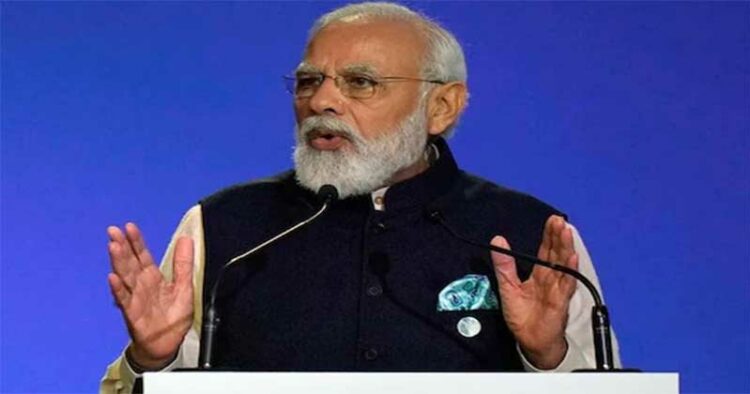As it is, the combo of Democracy and Development was lethal. Democracy essentially meant packaged with Elections, Hindutva nationalism and Secularism or pseudo-secularism.In 2014, Prime Minister Narendra Modi came to power promising a ‘New India’ and cleaning up of India. He tried to reform the country’s byzantine foreign policy and gave his diplomats more freedom professionally but kept great control over the entire show.
Come 2023 and the Moditva phenomenon will be added with Diplomacy.
Needless to debate that since 2014, Prime Minister Narendra Modi, despite his alleged ‘mofussil background’ and even limitations to articulate good English accents, has given Diplomacy a new twist and made his PMO the powerful engine room in guiding India’s march in international geopolitics.2023 he heads G-20 Presidium. It is no mean achievement though it may come on rotation.
But its significance is unique at a time when the human world is faced with multiple challenges, both artificial and also from mother nature. It’s an individual and crucial responsibility. During the just concluded winter session, External Affairs Minister Dr S Jaishankar told Parliament that India’s “endeavour is to build consensus within the G20, champion causes especially of the Global South, and shape the setting of the agenda”. “This will also be an occasion for us to highlight the 3Ds of India: Development, Democracy and Diversity,” he emphasised.
For his part, Prime Minister Modi has stated, “For India G-20 is a huge opportunity. India must utilise the opportunity of G-20 leadership by focusing on global good and welfare”. He further said, “Be it peace or unity, sensitivity towards the environment or sustainable development, India has solutions to challenges related to all such things”. But opportunities do not come alone. They bring in new challenges and a few complex ones. It is a different world.
The US hegemony is over, and the United Kingdom’s economy is declining. Inflation, energy issues and a decline in growth have brought us a ‘new Europe and a new western world’. Russia is in a striking mood. The Covid crisis has changed the global economic scenario permanently.
The worst may be knocking on the doors in 2023, given the high cases of the revival of the pandemic reported from China. Economically, the the Russia-Ukraine conflict will have a considerable impact. Some of it has far-fetched implications.
India did not join the global US-led club, and China, Saudi Arabia, and Brazil took the middle path in Russia’s War with Ukraine. Foreign Minister Jaishankar has explained repeatedly — even in a lighter vein – “we have taken sides; we are with our best interest”. Last 11 months since the conflict, such a stance has been possible.
Things may change later, and more so for the G-20 Presidium.
So far, Team Modi international statecraft – PM himself and aided by Jaishankar and NSA Ajit Doval and other diplomats — are playing their parts well. Prime Minister is aware that for the first time since the end of the Cold War, the hostilities between the US and Russia have increased manifold. The US has another tension area called China.
New Delhi is in the middle, and we must do the balancing act. Modi is sincere in positioning India as a trusted interlocutor between Global South and the North. Launched by India, the G-20 logo now invokes ‘Vasudhaiva Kutumbakam’, Buddha, and Mahatma Gandhi. But the crux of the matter is in power projection.
In 1983 when Indira Gandhi hosted NAM, this body is now lost in seminar debates at best – India’s efforts were on ideological moorings. Some of it — the moralistic preaching’s – did not make much sense to the rest of the world. This is ‘New India’ and a completely new era. Thus, for Modi and India, the G-20 mega event is a “vehicle for India to unshackle itself from its long-standing image as an emerging middle power with untapped potential”, as remarked by ‘The Diplomat’.
The best achievement will be for India to close the gap with major powers like China and Japan. There is yet another huge challenge. The G-20 may risk losing relevance as a primary financial institution. Today’s challenges include the Ukraine war, the Taiwan crisis, North Korean threats and challenges food and energy fronts. The world is gradually limping towards strategic, political, and security-focused issues.
In 2014, when Modi attended the G-20 Summit, London-based ‘The Guardian’ commented — “…Modi arrived at theG20 as the political rock star of the summit. As the newly minted prime minister of the largest democracy the world has ever known, the 64-year-old is the man the other leaders are seeking out this week”.
The Indian Prime Minister has held his reputation rock solid for the last eight years, notwithstanding the unfriendly atmosphere in domestic politics and more or less aggressive English media in the country.
‘The Guardian’ also commented: “He (Modi) speaks excellent English but is reluctant to. Instead he almost always chooses Hindi, the north Indian vernacular. Language is intensely political in India and Modi’s choice of the people’s tongue is another subtle but carefully engineered signal to his base that he is one of them and not above them”.
Last so many months, the Prime Minister gave enough emphasis on pushing India’s soft power. The Yoga Day to the International Year of Millets. Modi has embraced technology. Digital India is something India can be proud of.
It is faithful that India’s mobile phone-enchanted youth follow him on Twitter, and he has held foreign dignitaries and global leaders tight. Modi’s bear hug is now almost a fashion statement.
India has boarded flight 2023 G-20 and welcomes all. The luggage should not contain the souvenirs of ‘the cold war and mutual conflicts. Let us tighten the belt. The destination is ‘India of 2047’.
Meanwhile, enjoy the song – ‘Modi hai toh Mumkin hai’.



















Comments